Due to the Coronavirus Pandemic, the Richard Nixon Presidential Library and Museum closed on March 13, 2020, until further notice. The Education and Public Programs Team at the Nixon Library is pleased to remind you that the National Archives and Records Administration (NARA) continues to be an excellent source for entertaining and historical content! Simply follow the links below for additional information.
![]()
“The President and the Planet: Richard Nixon and the Environment”
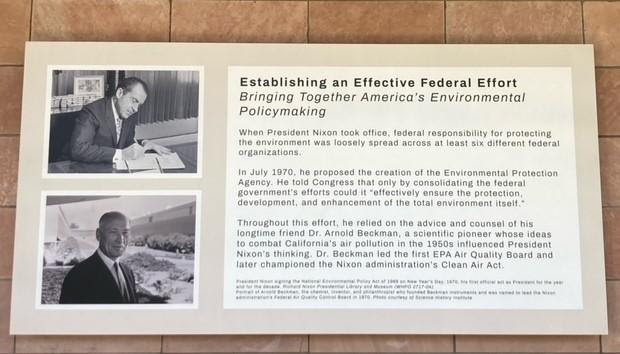
Placard hanging in the museum garden depicting Richard Nixon signing the EPA into law. Photograph courtesy of the Richard Nixon Presidential Library and Museum, National Archives and Records Administration.
The Environmental Decade
The years spanning 1970-1980, known as the environmental decade, began with the passing of the National Environmental Policy Act (NEPA) signed by Richard Nixon on January 1, 1970. NEPA created the Council on Environmental Quality, which oversaw the environmental impact of federal actions. The Council provided the framework for forming the Environmental Protection Agency (EPA), which became operational on December 2, 1970. Over the next three years, President Nixon dedicated the time and resources needed to counteract the environmental damage caused in the previous era. For a more in-depth view of the environmental record of the Nixon administration, please view the video linked below.
The President and the Planet: Nixon’s Environmental Legacy
Legacy and Commemoration
The Richard Nixon Presidential Library and Museum opened a beautiful outdoor exhibition on December 3, 2020, to celebrate the 50th anniversary of the Environmental Protection Agency. “The President and the Planet: Richard Nixon and the Environment” provides an in-depth look at the historic environmental initiatives of the Nixon years and the continued impact of the Environmental Protection Agency, the National Environmental Policy Act, the Clean Air Act, the Marine Mammal Protection Act, the Endangered Species Act, and the Legacy of Parks Program.
• The Marine Mammal Protection Act (MMPA) - In October of 1972, President Nixon signed the Marine Mammal Protection Act and the Ocean Dumping Act, marking the first time marine mammals and their habitats became protected by law.
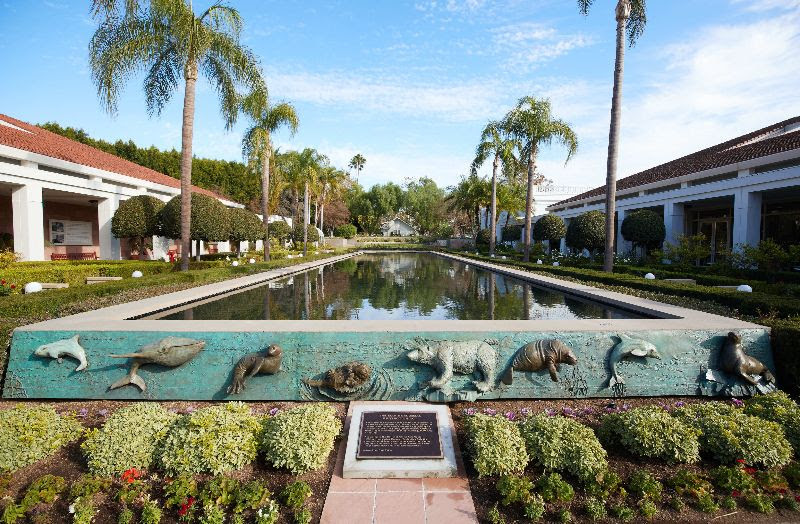
Artist Ron Pekar sculpted these eight animals (polar bear, blue whale, sea otter, bottlenose porpoise, seal, manatee, sea lion, and dolphin) before casting them in bronze. Photograph courtesy of the Richard Nixon Foundation.
• The Endangered Species Act (ESA) - December 28, 1973, marked the signing of the Endangered Species Act, a law designed to protect species in danger of extinction due to human activity. The sculptures and footprints celebrate over fifteen different species saved by this legislation.

A life-size bronze eagle, sculpted and produced by artist Trevor O’Tool. Photograph courtesy of the Richard Nixon Foundation.

A life-size, stylized grizzly bear, seated next to a Sierra Nevada red fox, with an El Segundo blue butterfly on his hind paw. Sculptor Trevor O’Tool created and welded this painted, stainless steel piece to bring attention to the three endangered species, all with ties to California. The bear measures 6.5’ tall and weighs just over 600lbs. Photograph courtesy of the Richard Nixon Foundation.
![]()

Bald Eagle
![]()
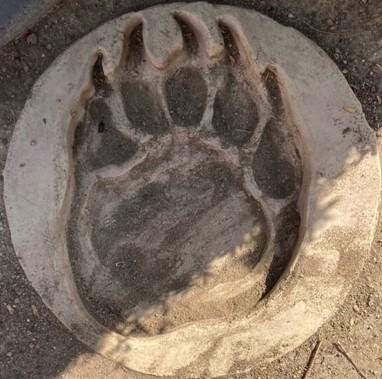
Grizzly Bear
Fifteen cast footprints of endangered species: the polar bear, Utah prairie dog, hare, grizzly bear, sea otter, bighorn sheep, California salamander, lynx, red squirrel, jaguar, wood bison, Catalina Island fox, white tailed deer, gray wolf, and bald eagle. Each lifelike set of prints was researched, designed, molded, and painted by Glendale-based sculptor, painter, and teacher Ron Pekar. Photograph courtesy of the Richard Nixon Presidential Library and Museum, National Archives and Records Administration.
• The Environmental Protection Agency (EPA) - Its creation consolidated federal research, monitoring and enforcement activities into a single agency. EPA's mission is to protect human health by safeguarding the air we breathe, water we drink and land on which we live.
• Legacy of Parks Program (LPP) - The initiative, introduced by President Nixon in 1971, converted closed federal lands to public use. This resource transformed over 80,000 acres of land into 642 parks which afforded access to both “the casual tourist and the avid outdoorsman” across the United States.
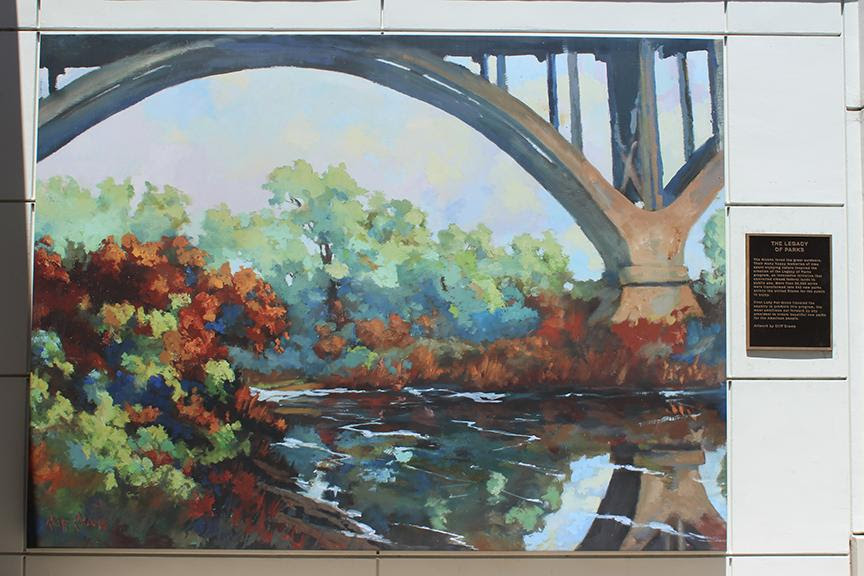
Paintings by artist Cliff Cramp. Cramp produced four bespoke landscapes for the Library, all based on parks and lands visited by First Lady Pat Nixon on her “Legacy of Parks” tour, an initiative intended to convert closed federal lands into spaces for the public to enjoy. The murals will be rotated intermittently, the current display is an imagined view from Minnesota’s Fort Snelling State Park. Photograph courtesy of the Richard Nixon Foundation.
Continuing Impact
In 2012, leading environmental groups ranked Richard Nixon as history’s second greenest President, second only to Theodore Roosevelt. We invite you to visit “The President and the Planet” outdoor exhibit located in the beautiful gardens of the Richard Nixon Presidential Library and Museum to learn more about the impact of the Nixon Administration’s environmental initiatives.
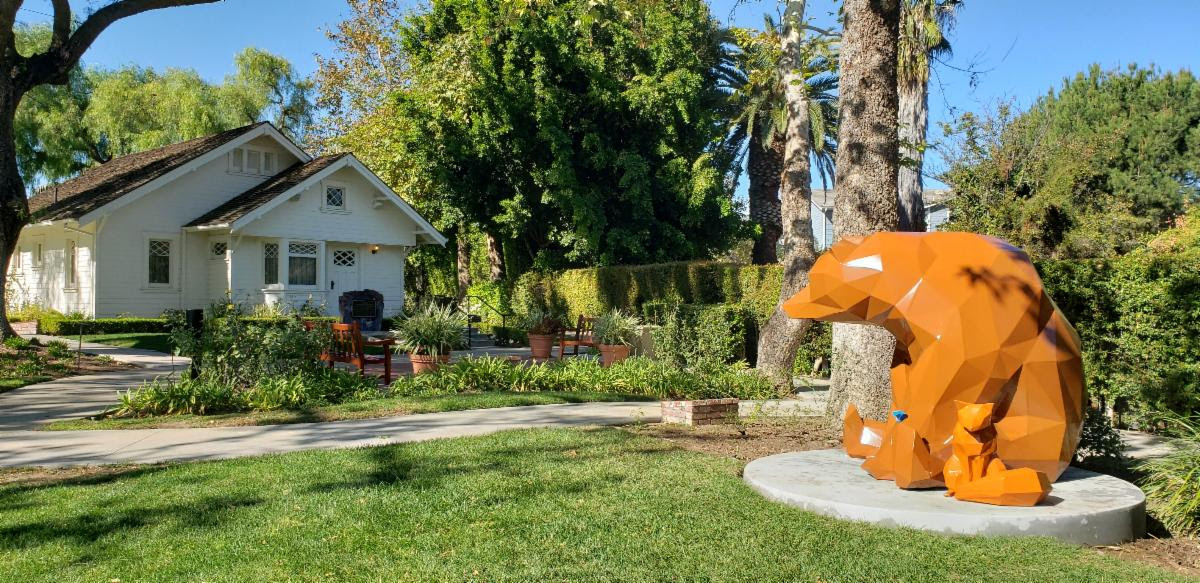
Commemorative statue by artist Trevor O’Tool facing Richard Nixon's birthplace. Photograph courtesy of the Richard Nixon Foundation.

